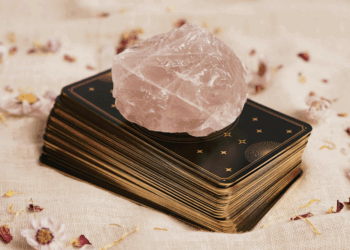
JoAnne Bassett | Waking Times
For millennia people from around the world have been using a powerful technique called lucid dreaming. A lucid dream is a dream during which the dreamer is aware of dreaming. During this type of dream, the dreamer may be able to exert some degree of control over the dream characters, narrative, and environment. In Eastern traditions, cultivating the dreamer’s ability to be aware that he or she is dreaming is central to both the Tibetan Buddhist practice of dream yoga and the ancient Indian Hindu practice of Yoga Nidra. Now science is catching up to prove the powers of lucid dreaming.
There is a group of plants known as “Oneirogens” (from the Greek oneirosmeaning “dream” and genmeaning “creating”), which produce and also enhance dream-like states of consciousness. These herbs and roots have been used for thousands of years for prophetic divination through dreams, out-of-body experiences, and to consciously awaken you during dream states.
One of the rarest and most obscure to most people is Agarwood, also known as Oud. The “Wood of the Gods” has at least 3,000 years of history around the world, in India, the Middle East, Japan and China. Agarwood facilitates clarity of mind, emotional balance and inner peace. The Koran and Bible both point to Oud as a sacred incense that leads one into paradise. One story tells of a monk’s sacrificing spirit in which he grinds one of his agarwood beads into powder whenever he met the sick in order to cure them with it, which resulted with even the seriously stricken person getting well.
Agarwood also has been associated with the Chinese tradition of Fengshui, a discipline of governing the flow of energy in a particular place, and the Oud wood has been associated with producing good luck and positive energy wherever it is placed. Agarwood calms the body, removes destructive and negative energies, provides enhanced awareness, reduces fear, invokes a feeling of vigor and harmony, and enhances mental functionality. Oud also eases neurotic and obsessive behavior.
Buddhists deploy agarwood for transmutation of ignorance. Tibetan monks utilize it to convey energy to wind down the mind and spirit. The Sufis and Japanese shamans also use agarwood oil in their esoteric rites.
Another prized and royal oil is that of the Blue Lotus. In Ancient Egypt, as well as in the Mayan civilization in particular, Blue Lotus has been used to invoke higher states of consciousness. The significance of the lotus is such that it is even cited in The Egyptian Book of The Dead. The blue lotus high provides a mild sense of tranquillity and euphoria, along with an altered sense of awareness. There are more reports of a noticeable impact on the vividness of dreams and dream recall than lucidity itself. Some advise that the dreamlike sensation the plant induces whilst waking continues into sleep itself – where dreams seem more colorful and lifelike. The alkaloids of the lotus can be absorbed through the skin making the essential oil a fragrant option for dream enhancement.
Frankincense has a history of use around the world as an antidepressant and spiritually uplifting medicine. Inhaling the aroma of frankincense essential oil has been show to have an impact on the clarity of dreams and the ability to recall dreams. Frankincense, an aromatic resin obtained from trees of the genus Boswellia, is one of the primary oils recommended for stimulating the pineal gland.
Jasmine Sambac has a tradition of use in astral travel blends. One milliliter of this essential oil takes on average 8,000 hand-picked flowers. One study conducted by researchers at the Wheeling Jesuit University found that jasmine is almost as effective as conventional sleeping aids. Researchers found that individuals who inhaled jasmine’s scent before going to sleep had deeper, more restful sleeps and woke up more alert with higher energy levels as well. They also found that it was effective at reducing anxiety.
Few herbs have had more uses in magic and ritual protection in European folklore than mugwort. Mugwort is a powerful imagination booster and has a long history of dispelling nervousness and fatigue while also being a potent dream herb, aiding in the remembrance of altered states of consciousness, this plant spirit acts as a bridge between worlds. It’s one of the main constituents of the infamous Witches flying ointment used for out-of-body and mystical experiences. It is found to also keep you longer in a conscious dream state (REM sleep).
Cedarwood was in use by the Sumerians and Egyptians over 5000 years ago and is believed to have been the first essential oil to be distilled. The Egyptians used it in their embalming process and the Tibetans used it in their medicine and incense. King Solomon used cedarwood in the construction of his temple, because its aromatic content would last indefinitely.
In the past, Cedarwood was used widely for worship, to elevate the mood and bring clarity to the mind. This is not surprising when you consider that, of all essential oils, cedarwood has the highest content of sesquiterpenes, molecules which are capable of penetrating the blood-brain barrier and transporting oxygen. It also has calming properties and in clinical tests it has been successful in treating ADD and ADHD.
Sandalwood has been used in India for centuries for its calming properties and its ability to relieve tension. One study focused on the effects that one of the natural compounds found in sandalwood, called santalol, had on the sleeping patterns of certain individuals. Researchers found that the test subject’s sleeping patterns were markedly improved after smelling sandalwood. Sandalwood essential oils are also high in sesquiterpenes, which is the chemical component that stimulates the pineal gland, increasing melatonin production. Sandalwood essential oil helps to heighten one’s intuition, aiding in experiencing astral projections.
Valerian Root has been used to induce lucid dreaming for centuries. It can help create more vivid dreams–and intense ones, too. Among the oil’s ingredients are valerenic acids and isovaltrate. Both of these turn out to be important in terms of its impact on the sleep cycle. Valerenic acids, like other sedatives, act upon GABA receptors. GABA, one of the brain’s most common inhibitors, reduces activity across neuronal networks by decreasing the excitability of neurons. The resulting decrease in communication between brain areas allows sleep onset to occur more quickly. Valerenic acids in Valerian root generally induce sleep onset more quickly, and allow the body to spend additional time in REM sleep stages evoking hyper real and possible strong emotional responses from the dreamer. Because of the short latency between dream periods, it is possible to have a lengthy, continuous dream episode on Valerian.
Angelica Root Essential Oil is also known as the Holy Ghost or Holy Spirit Root, Archangel Root and Oil of Angels. Angelica has been anecdotally found to be beneficial in protecting from night terrors and nightmares and is a perfect addition to a lucid dreaming blend for an uplifting and protective quality.
Bay Laurel was inhaled by ancient priestesses, including the oracle of Delphi, to induce a prophetic state and powers of divination. It is used to enhance clairvoyance and remove bad energy and spells from the body.
Chamomile is used for its soothing anti-anxiety and sleep inducing effects. Many people underestimate the power of chamomile for lucid dreaming which for many provide more vivid dreams than some popular lucid dreaming supplements.
One can experiment with these various oils to produce different effects in the endeavor of astral travel and lucid dreaming, as they can act as an out of body magic potion to the dedicated practicioner.
About the Author
JoAnne Bassett is a Natural Perfumer, Intuitive, Aromatherapist, Galactic Shaman and Royal Alchemist. Her service to humanity is being a divine messenger as a powerful light leader and intuitive healer. Her light coded natural perfumes raise vibrations and consciousness to love, peace, joy gratitude when worn.













![Everything You Ever Wanted to Know About 9/11 Conspiracy Theory in Under 5 Minutes [VIDEO] | by James Corbett](https://consciouslifenews.com/wp-content/uploads/2018/09/911-a-conspiracy-theory-120x86.jpg)
